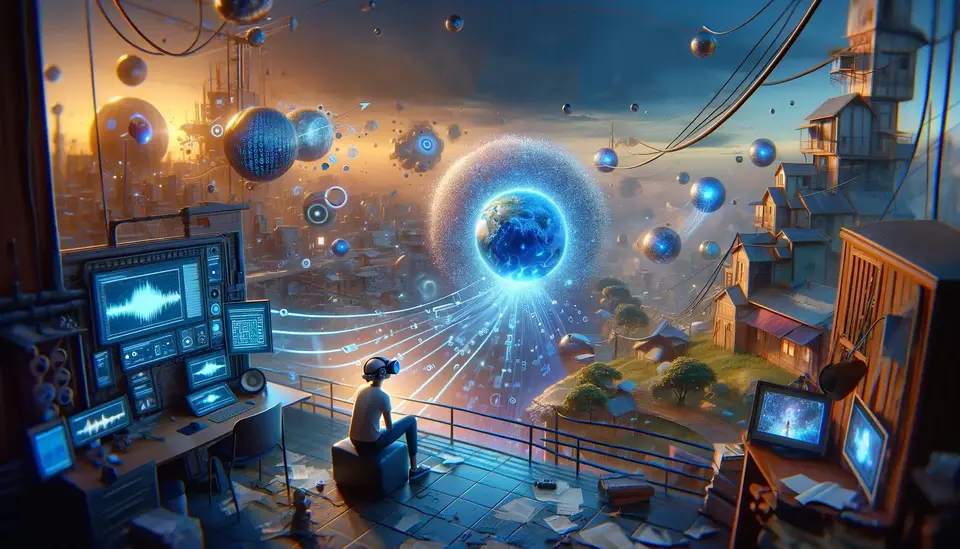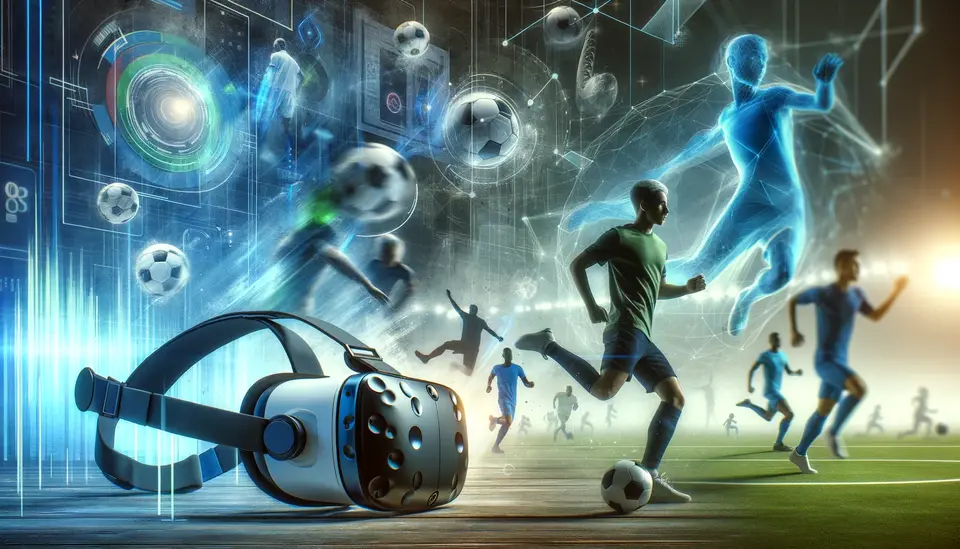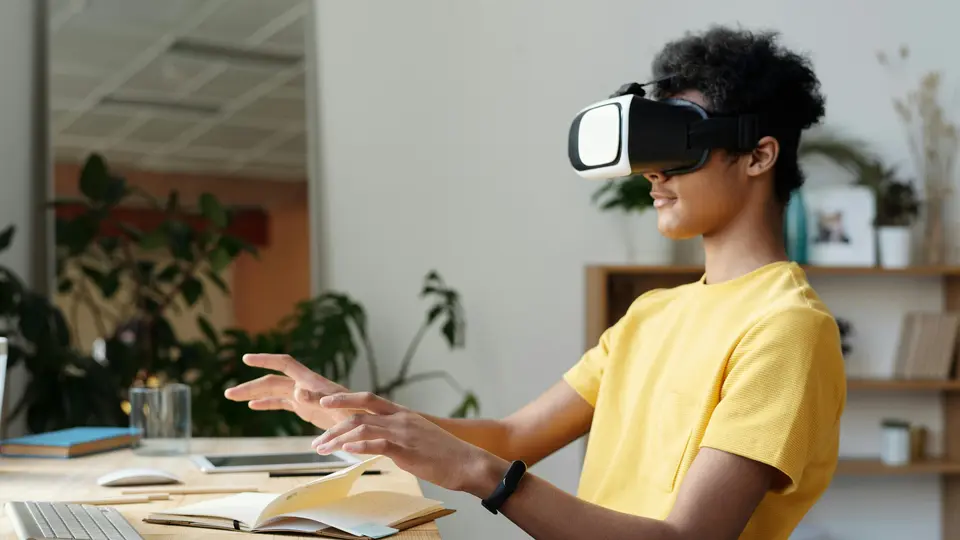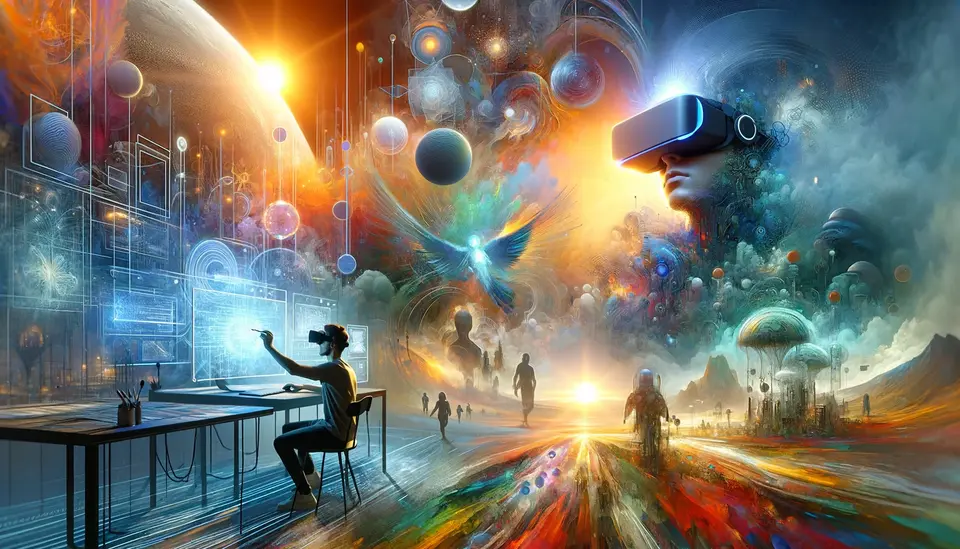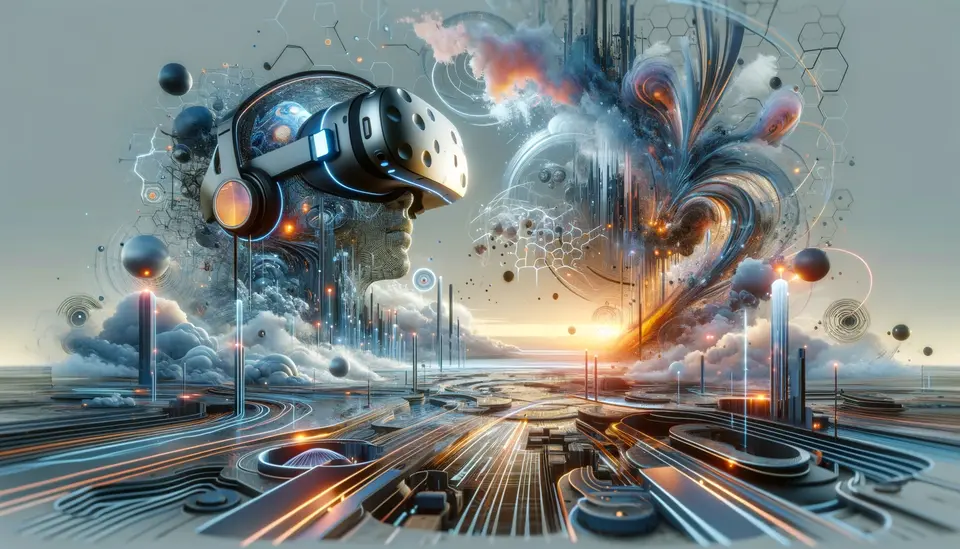Sora's Impact on Storytelling in Virtual Reality (VR)
Posted on March 22, 2024 8 minutes 1646 words
Table of contents
Introduction
In the realm of artificial intelligence and creative media, Sora represents a significant leap forward. This AI model, designed to generate realistic and imaginative scenes from text instructions, stands at the forefront of technological innovation. Its capabilities extend beyond static images, enabling the creation of dynamic videos that adhere to the user’s prompts with remarkable fidelity. This technology is not just about generating content; it’s about opening new avenues for storytelling, especially within the immersive environment of Virtual Reality (VR).
The significance of storytelling in VR cannot be overstated. VR offers an unparalleled medium for narrative experiences, enveloping users in worlds limited only by imagination. However, the potential impact of AI models like Sora in this space is transformative. By automating and enhancing the creation of detailed, dynamic scenes, Sora can revolutionize how stories are told, experienced, and shared in VR, making sophisticated storytelling accessible to a broader range of creators.
The Evolution of Storytelling in VR
The journey of storytelling in VR has been one of constant evolution and innovation. Initially, VR narratives were constrained by the limitations of the technology—static environments, limited interactivity, and a focus on visual spectacle over narrative depth. Traditional methods relied heavily on pre-rendered content, which, while visually impressive, offered little in the way of dynamic storytelling or user-driven outcomes.
However, the landscape began to shift with the advent of AI-powered storytelling. This transition marked a significant departure from conventional methods, introducing the possibility of generating content that is not only dynamic and responsive but also intricately detailed and deeply immersive. AI models like Sora, with their ability to understand and simulate complex scenes and characters from textual descriptions, herald a new era in VR storytelling. These technologies enable creators to craft narratives that adapt and evolve, offering personalized experiences to users and setting a new standard for immersion and engagement in VR content.
Understanding Sora: A Deep Dive
At its core, Sora is a text-to-video model that represents a remarkable advancement in AI-driven content creation. Capable of generating videos up to a minute long, Sora maintains visual quality and adherence to the user’s prompt, crafting complex scenes with multiple characters, specific types of motion, and accurate details of the subject and background. This is achieved through a deep understanding of language, enabling Sora to accurately interpret prompts and generate compelling characters that express vibrant emotions.
Underpinning Sora’s capabilities are sophisticated AI technologies, including diffusion models and transformers. Diffusion models generate a video by starting from a state resembling static noise and gradually refining it through a series of steps to produce the desired outcome. Transformers, on the other hand, contribute to Sora’s superior scaling performance by operating on spacetime patches of video and image latent codes, enabling it to handle a wide range of visual data across different durations, resolutions, and aspect ratios.
These underlying technologies are not just technical feats; they are the foundation of Sora’s relevance to VR storytelling. By leveraging these models, Sora can create content that is not only visually captivating but also rich in narrative depth and emotional resonance. This makes it an invaluable tool for VR creators, opening up new possibilities for storytelling that were previously unimaginable.
Sora’s Innovations in VR Storytelling
Dynamic Multi-Character Scenes and Emotional Expressiveness
Sora’s groundbreaking technology offers a profound impact on VR narrative creation by allowing for the generation of dynamic, multi-character scenes with a level of detail and emotional expressiveness previously unattainable through conventional methods. Imagine a VR experience where characters not only interact with each other in complex, lifelike ways but also express a range of emotions that enhance narrative depth. For instance, Sora can generate a scene where characters display subtle facial expressions and body language in response to narrative events, greatly enriching the storytelling palette.
This capacity for enhanced emotional expressiveness in characters, combined with the ability to generate intricate, multi-layered environments, transforms VR storytelling into a deeply immersive experience. Users can find themselves in richly detailed worlds where the narrative adapts and evolves, creating a sense of presence and engagement that fully leverages the immersive potential of VR.
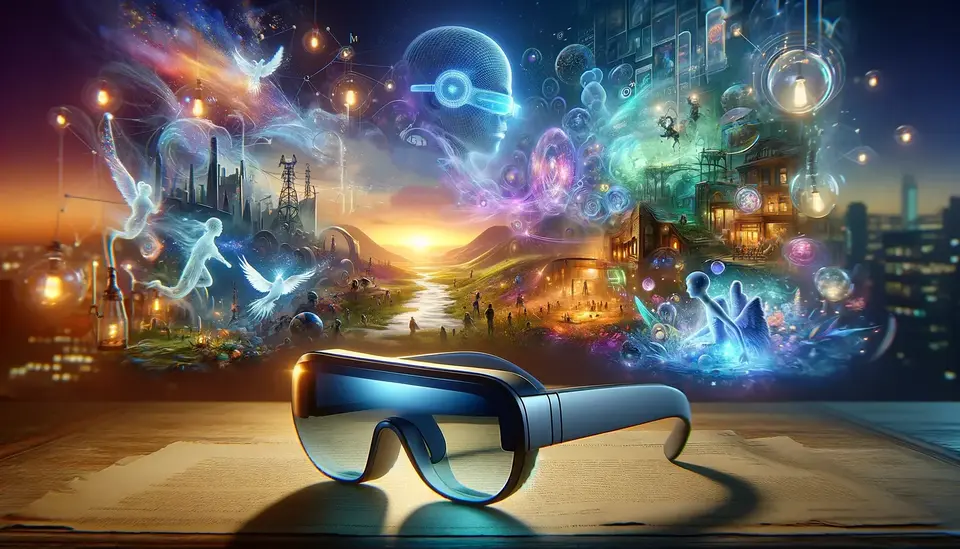
Immersive and Interactive Storytelling Experiences
Sora’s capabilities extend beyond visual quality, impacting how stories are told and experienced in VR. By generating content that closely adheres to textual prompts, Sora allows for a level of storytelling customization and interactivity that was previously challenging to achieve. This means that narratives can branch and change based on user interactions, leading to a more personalized and engaging experience.
For example, Sora can create scenes that adjust in real-time to the user’s decisions, altering character behavior and narrative outcomes. This not only makes the VR experience more immersive but also opens up new avenues for storytelling, where the narrative complexity and depth are limited only by the creator’s imagination.
The Creative Implications of Sora for VR Content Creators
Insights from Visual Artists, Designers, and Filmmakers
Although Sora has not been officially released yet, its potential has already sparked interest among visual artists, designers, and filmmakers involved in VR storytelling. These creative professionals see Sora as a tool that could revolutionize the way narratives are constructed and experienced in VR, offering unprecedented opportunities for creativity and experimentation.
The ability to generate videos from text prompts or extend existing videos can serve as a powerful creative catalyst, allowing creators to explore narrative possibilities without the constraints of traditional content creation methods. This could significantly lower the barrier to entry for creating VR content, enabling a broader range of voices and perspectives to contribute to the VR landscape.
Benefits for Creative Experimentation
The prospect of generating videos from still images or extending videos offers creative professionals the flexibility to iterate on their visions rapidly. This could lead to more dynamic storytelling, where creators can test different narrative paths or visual styles with ease, refining their stories based on instant feedback. For the VR industry, this means a potential explosion in creative output, with more diverse and innovative experiences available to users.
Challenges and Limitations
Current Limitations
Despite the promising capabilities of Sora, it’s important to acknowledge the model’s current limitations, especially in simulating the physics of complex scenes and understanding specific spatial details. These challenges could impact the realism and coherence of generated content, which are crucial for immersive VR experiences. As Sora continues to evolve, addressing these limitations will be essential for maximizing its potential in VR storytelling.
Ethical Considerations and Potential Misuse
The ethical implications and potential for misuse of technologies like Sora are significant concerns, particularly in the context of VR content creation. The ability to generate realistic videos from text prompts raises questions about authenticity, copyright, and the potential creation of misleading or harmful content. As Sora moves closer to release, it will be crucial for OpenAI to implement robust safety measures and ethical guidelines to mitigate these risks, ensuring that Sora enhances the VR storytelling landscape in positive and responsible ways.
The Future of AI in VR Storytelling
Future Advancements in AI-driven Storytelling Technologies
The horizon of AI-driven storytelling, especially within the VR domain, is vast and brimming with potential. As technologies like Sora evolve, we can anticipate several advancements that could further revolutionize the VR industry. One such advancement could be the seamless integration of AI-generated content with real-time user interactions, allowing for truly dynamic narratives that can evolve spontaneously based on user choices or emotions detected through VR hardware.
Moreover, the improvement in AI’s understanding of complex physical interactions and spatial details could lead to more lifelike simulations of the real world, blurring the lines between virtual and physical realities. Enhanced AI models could also enable the creation of VR content in real-time, lowering production times and costs, and democratizing content creation across a wider range of creators and storytellers.
The Role of Ongoing Research and Community Feedback
The trajectory of Sora and similar AI-driven technologies will be significantly influenced by ongoing research and the invaluable feedback from the creative community and users. As these technologies are iteratively refined, incorporating insights from diverse user experiences and ethical considerations will be crucial. This feedback loop not only ensures that the AI models are aligned with user needs and ethical standards but also fosters innovation tailored to enhancing storytelling in VR.
Engagement with policymakers, educators, and artists will further guide the development of these tools, ensuring they serve educational, cultural, and entertainment purposes responsibly. As the community explores and pushes the boundaries of what’s possible with AI in VR storytelling, the collective insights will shape the future of this exciting intersection of technology and creativity.
Conclusion
Sora, with its groundbreaking capabilities in generating dynamic, emotionally resonant scenes from textual prompts, represents a significant milestone in the evolution of VR storytelling. While it has not been officially released yet, the anticipation surrounding its potential speaks volumes about the transformative impact it could have on the VR industry.
As we look forward to the future of storytelling in VR, the importance of responsible innovation cannot be overstated. The collaboration between AI researchers, content creators, and the broader community is essential in navigating the ethical complexities and unlocking the full potential of technologies like Sora. The path ahead is filled with exciting possibilities, promising a new era of immersive, interactive, and emotionally engaging narratives that will redefine the storytelling experience in virtual realities.

